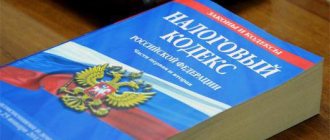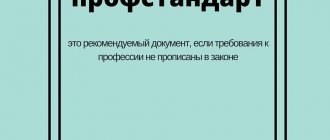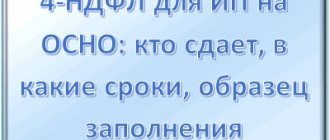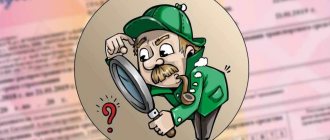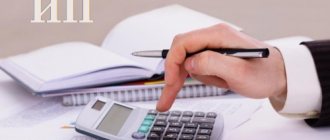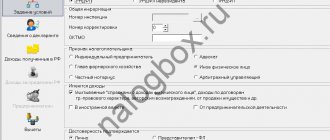New status - new rules
So, your company, meeting the criteria for “simplified”, has decided to switch to the simplified tax system with OSNO. On the one hand, this is good news: less taxes means less headaches. And what taxes! One of the most complex and “paper” is VAT: invoices, declarations, books of purchases and sales. If you simplify, you won't need all this.
There are some exceptions, which you can read more about here .
On the other hand, being on the OSN, you were not only obliged to charge VAT, but also had the right to a deduction, which you, of course, used. However, one of the most important conditions for the use of deductions (subclause 1, clause 2, article 171 of the Tax Code of the Russian Federation) is the use of assets and inventory items in activities that are subject to VAT.
With the transition to the simplified tax system, this condition will no longer be met for you, which means that you, in accordance with subparagraph. 2 p. 3 art. 170 of the Tax Code of the Russian Federation, you will be required to restore previously deducted VAT on those goods, materials and assets that remained on the balance sheet at the time of the transition to the new taxation system. And this must be done by submitting a declaration for the quarter preceding the transition to the simplified tax system.
Example
The company, which switched from 01.01.2020 from OSNO to the simplified tax system, has the following balances on its balance sheet as of 12/31/2019: raw materials and supplies - 100,000 rubles, goods - 200,000 rubles. According to the inventory data, the company previously claimed VAT for deduction. In this case, when switching to the simplified tax system, it will be necessary to restore VAT by making the following entries on December 31, 2019:
Dt 19 Kt 68 – 60,000 (20% × (100,000 + 200,000)) - VAT on goods and materials, previously deducted, has been restored.
Dt 91 Kt 19 – 60,000 - restored VAT is included in other expenses.
IMPORTANT! The procedure for recording VAT restoration operations in accounting should be described in the accounting policy. It may be similar to that shown in the example. It is also possible not to use account 19, but to charge the accrual of the restored tax directly to expenses.
Position of the tax authorities
On the issue of restoring VAT on the balance of goods, the opinion of the tax authorities is based on subparagraph 3 of paragraph 2 of Article 170 of the Tax Code of the Russian Federation, according to which, when purchasing goods by persons who are not taxpayers in accordance with Chapter 21 of the Tax Code of the Russian Federation or are exempt from fulfilling the taxpayer’s duties for calculating and payment of tax, the amounts of VAT presented for payment are taken into account in the cost of goods (letter of the Department of Tax Administration for Moscow dated 03/09/2003 No. 24-11/15029).
The position of the tax authorities on the issue of restoring VAT on fixed assets is that after the transition to a simplified taxation system, the amount of VAT previously accepted for deduction in accordance with Articles 171 and 172 of the Tax Code of the Russian Federation, as a share of the under-depreciated value of the property, must be restored and paid in budget (clause 2, clause 2 of the Appendix to the letter of the Department of the Ministry of Taxes and Taxes for Moscow dated April 2, 2003 No. 11-15/17644).
We will demonstrate the fulfillment of these requirements using specific examples performed in the “Simplified Taxation System” configuration for “1C:Enterprise 7.7”.
Restoration of VAT on remaining goods
Example 1
| In October 2003, Romashka LLC purchased 200 carved hangers at a price (excluding VAT) of 500 rubles. a piece. The price of the goods was 100,000 rubles, VAT (20%) - 20,000 rubles, total - 120,000 rubles. The VAT amount was accepted for deduction. By the end of 2003, 185 pieces were sold and as of December 31, 2003, there were 15 hangers left in the warehouse. |
In accounting for the period of work under the general taxation regime, there will be transactions related to the receipt of goods and VAT accounting (see Table 1).
Table 1
| date | Contents of operation | Postings | Sum | Required documents | |
| Dt | CT | ||||
| 01.10.2003 | Paid the goods to the supplier | 60 | 51 | 120000 | Payment order |
| 01.10.2003 | The goods have been received | 41 | 60 | 100000 | Invoice |
| 01.10.2003 | VAT allocated on paid goods | 19.3 | 60 | 20000 | Invoice |
| 01.10.2003 | Accepted for deduction, VAT amounts paid to the supplier | 68.2 | 19.3 | 20000 | Invoice |
On the date preceding the start of accounting under the simplified taxation system in the program, we will manually perform the operation “Entering initial balances” (see Fig. 1), consisting of 2 transactions:
- by debit of subaccount 41.2 “Goods, the value of which is accepted for tax purposes” (quantity and value) in correspondence with auxiliary account 00;
- on the debit of subaccount MX.2 “Accounting for inventory items by storage location - goods”, indicating only the quantity.
Rice. 1. The operation of entering product balances.
The amount of VAT accepted for deduction when purchasing goods, attributable to the balance of goods, will be:
20000/200x15=1500 rub.
This amount is subject to payment to the budget. To account for it, we will also manually enter an operation (see Fig. 2), consisting of 3 transactions:
Debit 19 “VAT on purchased assets” Credit 68.2 “Value added tax” - restoration of the VAT amount on the balance of goods; Debit 41.2 “Goods, the value of which is accepted for taxation” Credit 19 “VAT on acquired values” - assigning the amount of VAT to the cost of the goods; Debit of the off-balance sheet VAT account “Input VAT not accepted as expenses” - accounting for input VAT.
Rice. 2. Operation of VAT recovery on the balance of goods
Now for organizations that have chosen “Income reduced by the amount of expenses” as an object of taxation, when selling the goods, the goods will be written off at cost, taking into account the restored VAT: (7500+1500)/15=600 rubles. a piece. Moreover, if on the issue of recognizing expenses on goods, the enterprise also takes a cautious position, consistent with the opinion of the Ministry of Taxes of Russia, and in the “Information about the organization” (menu “Service”) on the “Taxation” tab, the option of recognizing expenses on goods is set - after payment by the buyer , then expenses on goods will be accepted for tax purposes - in the debit of account N02.2 “Other expenses taken into account when calculating the single tax”, only after the buyer pays for the goods when posting the “Statement” document (menu “Documents”).
The corresponding entries will be generated in the “Income and Expenses Accounting Book” (menu “Reports”) (see Fig. 3).
Rice. 3. Book of income and expenses
The restored amount of VAT in accordance with the order of the Ministry of Taxes of Russia dated January 21, 2002 No. BG-3-03/25 should be indicated in the tax return for value added tax (Menu “Reports/Regulated reports/Tax reporting/VAT”) in section 2.1 “Calculation total amount of tax" on line 370 "Amounts of tax paid by the taxpayer on goods (work, services) accepted for accounting, including fixed assets and intangible assets previously included in tax deductions and subject to restoration." The same amount will automatically be reflected in lines 390 “Total amount of VAT calculated for payment to the budget for a given tax period” and 430 “Total amount of VAT calculated for payment to the budget.”
Restoration of VAT on fixed assets
Example 2
| In August 2003, Romashka LLC purchased and put into operation a fixed asset - a grinding machine. The price of the operating system was 18,400 rubles, VAT (20%) - 3,680 rubles, total - 22,080 rubles. The VAT amount was accepted for deduction. The useful life of the OS is 60 months. |
The accounting records for the period of operation under the general taxation regime (GRT) should have contained the transactions presented in Table 2.
table 2
| date | Contents of operation | Postings | Sum | Required documents | |
| Dt | CT | ||||
| 10.08.2003 | Paid the supplier's invoice | 60 | 51 | 22080 | Payment order |
| 13.08.2003 | OS object accepted for accounting | 08.3 | 60 | 18400 | Invoice |
| 13.08.2003 | We allocated VAT on the fixed assets item paid and accepted for accounting | 19.1 | 60 | 3680 | Invoice |
| 13.08.2003 | Accepted for deduction, the amounts of “input” VAT paid to the supplier | 68.2 | 19.1 | 3680 | Invoice |
| 14.08.2003 | The purchased fixed asset was put into operation | 01 | 08.3 | 18400 | Certificate of acceptance and transfer of fixed assets |
| 14.08.2003 | Depreciation was calculated for September, October, November and December 2003. | 20 | 02 | 1226.67 | Accounting certificate-calculation |
We begin entering information on fixed assets by creating a new element - “grinding machine” in the “Fixed Assets” directory (menu “Directories”). Let us first fill out only the first tab “General information” (see Fig. 4), noting the sign that the fixed asset is “subject to depreciation” and the sign that it is necessary to “accrue depreciation” on it.
Rice. 4. The “General Information” tab of the “Fixed Assets” directory
On the date preceding the start of accounting in the program, using a manual operation in correspondence with auxiliary account 00, we will enter the balances of the fixed asset (see Fig. 5):
- the initial cost of fixed assets (excluding VAT) - by debit of subaccount 01.1 “Fixed assets in the organization”;
- accrued depreciation during operation according to ORN, equal to the amount of 18400/60x4= =1226.67 rubles. — on the credit of subaccount 02.1 “Depreciation of fixed assets recorded on account 01.”
Rice. 5. Operation of entering balances for a fixed asset
We will also manually enter entries for VAT restoration (see Fig. 6):
Debit 19 “VAT on purchased assets” Credit 68.2 “Value added tax” - restoration to payment to the budget of the amount of VAT previously allocated to settlements with the budget; Debit 01.1 “Fixed assets in the organization” Credit 19 “VAT on acquired assets” - assigning the restored amount of VAT to the cost of fixed assets; Debit 68.2 “Value added tax” Credit 02.1 “Depreciation of fixed assets accounted for in account 01” - accounting for the share of recovered VAT attributable to the already depreciated part of the cost of fixed assets, equal to 3680/60x4 = 245.33 rubles.
Rice. 6. Operation of VAT restoration on a fixed asset
Thus, the amount of VAT previously accepted for deduction in relation to the residual value of the fixed asset is subject to payment to the budget (credit to subaccount 68.2). In this example, it is equal to the amount of 3680-245.33 = 3434.67 rubles.
Let us now return to filling out the “Accounting” and “Tax Accounting” tabs in the “Fixed Assets” directory (see Fig. 7), indicating as the initial cost of fixed assets, including VAT (the amount in the debit of subaccount 01.1) and the amount of accrued depreciation, also with including VAT (amount on the credit of subaccount 02.1). By clicking the “Show payments” button, we will add a line with the date and amount of payment for the fixed asset.
Rice. 7. Tab “Tax Accounting” of the directory “Fixed Assets”
In accordance with paragraph 3 of Article 346.16 of the Tax Code of the Russian Federation, the residual value of the paid fixed asset is included in expenses that reduce income when determining the tax base. They are distributed across tax periods based on their useful life. In particular, for OS with a useful life from 3 to 15 years inclusive, during the first year of application of the simplified tax system - 50%, the second - 30% and the third - 20%. In this case, during the tax period, expenses are accepted in equal shares for the reporting periods. Recognition of expenses for the acquisition of fixed assets is carried out using the document “Month Closing” (menu “Documents”) in the last month of the reporting period.
The calculation of expenses for the acquisition of fixed assets accepted when calculating the tax base for a single tax (see Fig. 8) can be generated by setting the appropriate attribute in the “Income and Expenses Accounting Book” dialog box (the “Reports” menu).
Rice. 8. Calculation of expenses for the acquisition of fixed assets accepted for tax accounting
The restored amount of VAT, as in the previous example, should be indicated in the tax return for value added tax in section 2.1 “Calculation of the total tax amount”.
"1C:Servistrend" Tel., 748-63-53, 962-64-00 E-mail (general)
Restoration of VAT on fixed assets and intangible assets
Here there will be a slightly different picture: VAT (the one that was accepted for deduction when purchasing property) is not restored in full, but only from its residual value. At the same time, the restored VAT on these assets, in accordance with Art. 264 of the Tax Code of the Russian Federation, must be taken into account as another expense that reduces taxable profit (letters of the Ministry of Finance of Russia dated 04/01/2010 No. 03-03-06/1/205, dated 01/27/2010 No. 03-07-14/03).
Example
A company switching from 01.01.2020 from OSNO to simplified taxation system has a car with an initial cost of 3 million rubles, while depreciation was accrued on the date of transition in the amount of 1 million rubles. The amount of VAT that was previously declared for deduction is 600,000 rubles. In this example, we first need to calculate the residual value of the car (it will be equal to 2 million rubles), after which we can determine the amount of VAT attributable to this cost:
600 000 × 2 000 000 / 3 000 000 = 400 000.
Now let’s reflect the calculations made in the transactions:
Dt 19 Kt 68 – 400,000 – VAT on fixed assets, previously deducted, has been restored;
Dt 91 Kt 19 – 400,000 - restored VAT is charged to other expenses.
No VAT recovery required for work performed (services provided)
Quite often, a company that has switched from a general taxation system to a simplified one faces the following situation: work or services were paid for and taken into account during the period of application of the simplified taxation system, but continue to be partially used under the simplified taxation system (for example, repairs of industrial premises).
According to the author, this fact is not a reason for reinstating VAT. After all, as a rule, work (services) are performed, paid for, accepted, and also mainly used during the period of application of the OSN. At the same time, the legislation does not stipulate the procedure for recovering VAT amounts on works and services used both in carrying out activities on the OSN, and in the future when applying the simplified tax system (regulatory Federal Antimonopoly Service of the North-West District dated 04.06.2013 No. F07-1913/13 (as determined by the Supreme Arbitration Court of the Russian Federation from 10.10.2013 No. VAS-13490/13, the review of the case was denied)).
At what rate to restore VAT?
This question may be relevant if you have on your balance sheet non-depreciated fixed assets acquired during the period when VAT was levied at a rate different from that in force during the recovery period. For example, when switching to the simplified tax system from 2020, these are fixed assets acquired before 2004 with VAT at a rate of 20%. In this case, when VAT is restored during the period when the rate was 18% (in the 4th quarter of 2020), a logical question arises: at which of these rates should the tax be restored? The Ministry of Finance provides some clarification on this matter (for example, in letter dated 08/02/2011 No. 03-07-11/208).
Despite the fact that in the recovery quarter VAT is calculated based on 18%, it is necessary to restore the tax credited at the previously valid rate (and it was this rate that was indicated in the corresponding invoice). Therefore, the tax should be restored precisely at the rate in effect at the time of acquisition of the property. If the invoice was lost or destroyed due to the expiration of the mandatory storage period for primary documents, then the restoration of the tax on property put into operation before 2004 is carried out at a rate of 20% on the basis of an accounting certificate (clause 14 of the Rules for maintaining a sales ledger , approved by Decree of the Government of the Russian Federation dated December 26, 2011 No. 1137).
A similar, but opposite situation may arise when switching to the simplified tax system from 2020, when in the 4th quarter of 2020 you will have to restore VAT on property purchased before 01/01/2019 at a rate of 18%.
Read the article “Procedure for VAT recovery when switching to the simplified tax system (nuances)” , which also describes this situation.
If VAT is restored on goods or materials that are taxed at a rate of 10%, then VAT must be restored at exactly this rate.
About paying tax.
According to paragraph 1 of Art. 174 of the Tax Code of the Russian Federation, payment of VAT upon transition to the simplified tax system for transactions recognized as an object of taxation in accordance with paragraphs. 1 – 3 tbsp. 146 of the Tax Code of the Russian Federation, on the territory of the Russian Federation is carried out based on the results of each tax period based on the actual sale (transfer) of goods (performance, including for one’s own needs, work, provision, including for one’s own needs, services) for the expired tax period in equal shares no later than the 25th day of each of the three months following the expired tax period, unless otherwise provided by Chapter. 21 Tax Code of the Russian Federation.
Where to enter information on restored VAT when switching to the simplified tax system
The answer to this question is contained in clause 14 of the rules for maintaining a sales book (Appendix 5 to Decree of the Government of the Russian Federation dated December 26, 2011 No. 1137). There are also corresponding clarifications from the Ministry of Finance in letter dated November 16, 2006 No. 03-04-09/22 and the Federal Tax Service in letter dated September 20, 2016 No. SD-4-3 / [email protected] , which contain recommendations for filling out the purchase book and sales book. Officials believe that an entry for tax restoration must be made in the sales book, and as a basis indicate the document on which VAT was previously accepted for deduction.
In the VAT return, the restored tax is reflected in line 080 of section 3 with a breakdown in section 9 for each operation. If VAT is restored on a property, then for the year in the 4th quarter declaration it is necessary to fill out Appendix 1 to Section 3.
What VAT transaction codes are indicated in the declaration and accounting registers, read in this article.
How to fill out and submit a VAT return, read the materials in our special section, which is dedicated to VAT reporting.
Recovering VAT from advances listed
Let's consider a situation that is quite common in practice, when advances for acquired assets (works, services) were paid by the company when applying the OSN, and the assets themselves (works, services) were already received on a “simplified” basis. Being a VAT payer, the company had the right to deduct tax amounts from advances transferred to the supplier on account of future deliveries (clause 12 of article 171, clause 9 of article 172 of the Tax Code of the Russian Federation). Therefore, in this case, VAT is restored in the amount previously accepted for deduction (paragraph 2, subparagraph 2, paragraph 3, article 170 of the Tax Code of the Russian Federation) (see example 2).
In accounting, this transaction is reflected as follows:
DEBIT 60 CREDIT 68 subaccount “VAT”
There is no expense in tax accounting because the assets have not yet been received.
Passive LLC used the simplified tax system in 2020, and from 2020 switched to the simplified tax system. Advance payment for purchased goods in the amount of 118,000 rubles. (including VAT - 18,000 rubles) was transferred to the supplier during the period of application of the simplified tax system, and the goods themselves were received when the simplified tax system was applied.
As of December 31, 2015, the accountant of Passiv LLC made the following entries:
DEBIT 60 CREDIT 68 subaccount “VAT” – 18,000 rubles. – the amount of recovered VAT from the advance payment transferred.
As in the case of the acquisition of assets (works, services) for full payment:
- invoices on the basis of which VAT amounts were accepted for deduction are registered in the sales book for the amount of tax to be restored (clause 14 of the Rules);
- the restored VAT is shown in column 5 on line 080 of section 3 of the VAT return (subclause 38.5, clause 38 of Appendix No. 2);
- if VAT amounts on advances were not claimed for deduction, then there are no grounds for VAT restoration.
What to do with VAT on previously received advances
Let’s assume that while working for OSNO, you received an advance payment for a future delivery, which took place when you had already become a “simplified worker.” Having received an advance, you paid VAT on this amount to the budget. But by switching to the simplified system, you cease to be a tax payer. What to do in this case with VAT when switching to the simplified tax system?
The answer is contained in the provisions of Art. 346.25 Tax Code of the Russian Federation. In the last quarter of the year preceding the transition to the simplified tax system, the tax on advances received, which was previously paid to the budget, can be deducted. To do this, it is necessary to transfer the amount of VAT to the buyer’s bank account (clause 5 of Article 346.25 of the Tax Code of the Russian Federation). And of course, you should still have documents confirming this operation (letter of the Federal Tax Service of Russia dated February 10, 2010 No. 3-1-11 / [email protected] ).
By the way, the arbitrators come to the conclusion that such documents can be not only payment bills, but also agreements on offsetting refundable VAT amounts against future payments under the same agreement (Resolution of the Federal Antimonopoly Service of the North-Western District dated 08/04/2010 No. A21-11991/2009) . In addition, the judges believe that a company can use its right to deduction even when the contract under which the advance was received was terminated and the money received was not returned to the buyer (Resolution of the Federal Antimonopoly Service of the Volga District dated July 18, 2008 No. A65-26854/2007 ). Thus, taxpayers have every chance to defend their right to a deduction in the situation under consideration.
For advances, see also our material “Acceptance for deduction of VAT on advances received.”
On the application of the norm.
VAT accrued for payment to the budget in connection with the receipt of an advance payment can legally be accepted for deduction in the fourth quarter, provided that the organization simultaneously performs the following actions:
- signing additional agreements to contracts with customers on changes in the cost of services from 01/01/2018. This can happen in two scenarios. First, the cost of services can be reduced by the amount of VAT (for example, the initially agreed price of 590 rubles, including VAT - 90 rubles, will change to 500 rubles excluding VAT). Second, the cost of services in absolute terms remains unchanged, but it is renegotiated without VAT (for example, the initially agreed price of 590 rubles, including VAT - 90 rubles, will change to 590 rubles without VAT);
- refund of the tax amount to the buyer. Without refunding VAT to buyers, the supplier does not have the right to deduct VAT amounts calculated and paid from advance payments (Letter of the Federal Tax Service of Russia dated February 10, 2010 No. 3‑1‑11/ [email protected] ).
Thus, in the Resolution of the AS SZO dated December 12, 2014 in case No. A56-75087/2013, the judges considered it sufficient to accept the deduction of “advance” VAT by agreeing on the contract price in a version reduced by the amount of VAT and returning this amount of tax to the buyer’s current account. In the case under consideration, the VAT amount was returned to customers in December of the year preceding the organization’s transition to the simplified tax system. In our opinion, in the case of a VAT refund after the transition to the simplified tax system, but before the deadline for submitting the VAT return for the fourth quarter of the year preceding such a transition, the deduction is also legal. So, clause 1.1 of Art. 172 of the Tax Code of the Russian Federation, when switching from the basis to the usn, allows you to declare a VAT deduction on purchased and capitalized goods (work, services), for which invoices were received late (after the end of the tax period in which the delivery occurred, but before the deadline for submitting a tax return ), precisely during the period of their acceptance for accounting. Applying this rule by analogy, we can assume that by returning VAT amounts to customers before January 25, 2018, the organization has the right to claim a tax deduction in the fourth quarter of 2017.
The buyer’s tax actions related to changes in the supplier’s taxation system will depend on whether he used his right to deduct “advance” VAT at the time of transfer of the prepayment (provided for in clause 12 of Article 171, clause 9 of Article 172 of the Tax Code of the Russian Federation) or No. If the buyer has not applied the deduction of “advance” VAT, then he simply receives goods (work, services) upon receipt (fulfillment, provision) at cost excluding VAT. If a deduction was applied, then the tax must be restored on the date the seller returns the VAT amount to him (based on clause 3, clause 3, article 170 of the Tax Code of the Russian Federation).
In this case, no special invoices in pursuance of the provisions of paragraph 5 of Art. 346.25 of the Tax Code of the Russian Federation should not be drawn up.
Results
Restoring VAT during the transition to a simplified tax system is an issue that has many nuances. When submitting a return for the last quarter in which OSNO was applied, you should carefully study the information about which transactions will require a mandatory tax refund and what deductions can be left. Unfortunately, it will not be possible to re-claim the deduction when returning to OSNO.
If you are interested in how to pay taxes if a notice of transition to the simplified tax system was submitted by mistake, then read the article “What to do in case of an error with a simplified tax system object?”.
Sources:
- Tax Code of the Russian Federation
- Decree of the Government of the Russian Federation dated December 26, 2011 No. 1137
- Letter of the Federal Tax Service of Russia dated September 20, 2016 No. SD-4-3/ [email protected]
- Resolution of the Federal Antimonopoly Service of the North-Western District dated 08/04/2010 No. A21-11991/2009
- Resolution of the Federal Antimonopoly Service of the Volga Region dated July 18, 2008 No. A65-26854/2007
You can find more complete information on the topic in ConsultantPlus. Full and free access to the system for 2 days.
Recovering VAT from real estate purchases
Previously, there was an opinion that, according to the Tax Code of the Russian Federation, there is a special procedure for the restoration of VAT for real estate (evenly over 10 years (paragraph 5, clause 6, Article 171 of the Tax Code of the Russian Federation)). The author considers this statement to be incorrect for at least two reasons.
Firstly, the above norm is not valid from January 1, 2015 (subparagraph “a”, paragraph 6, article 1, part 5, article 9 of the Federal Law of November 24, 2014 No. 366-FZ). And although similar rules are now given in Article 171.1 of the Tax Code of the Russian Federation, they do not affect the procedure for recovering VAT on real estate. After all, when switching to the simplified tax system, you must be guided by the restoration procedure provided for in subparagraph 2 of paragraph 3 of Article 170 of the Tax Code of the Russian Federation.
Secondly, the special procedure was not previously applied to persons switching to the simplified tax system (post. of the Presidium of the Supreme Arbitration Court of the Russian Federation dated December 1, 2011 No. 10462/11), since it applied only to VAT payers (letter of the Federal Tax Service of Russia dated December 13, 2012 No. ED -4-3/21229).
Thus, VAT restoration on acquired real estate should be carried out in the same manner as for fixed assets.



